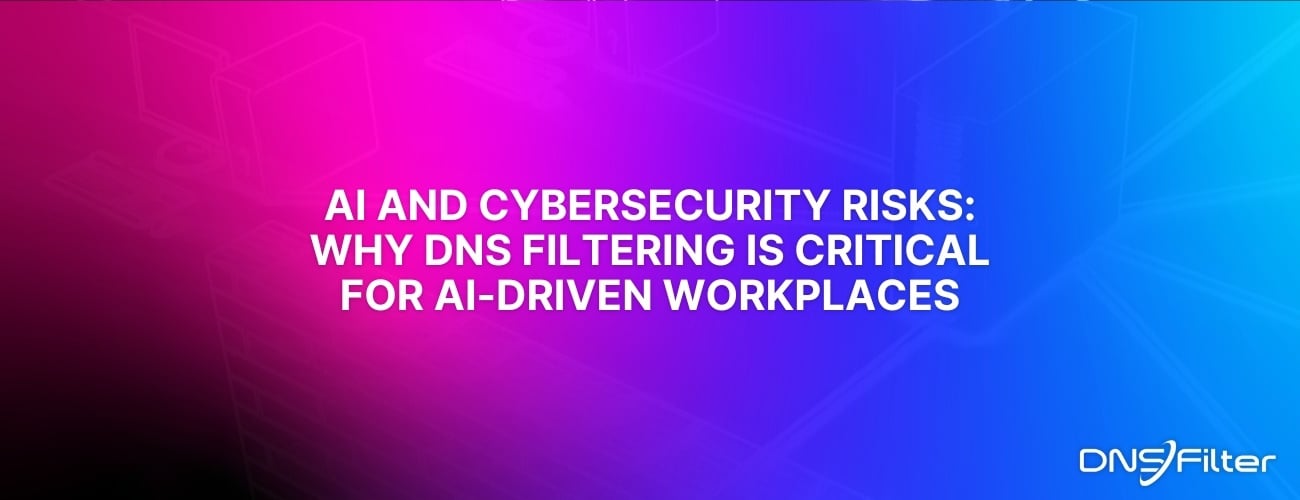Share this
Insights Reporting: DNSFilter Announces Improved Reporting
by Mikey Pruitt on Apr 15, 2021 12:00:00 AM
A new age of reporting is here
In the last year at DNSFilter, it’s been a goal of our product team to better connect the user to the query. After conversations with our customers in the summer of 2020, it became clear that our reporting wasn’t giving our users the visibility they needed to make network decisions.
As one beta tester put it, they needed to be “able to determine the who, what, when, where, with specificity.” That’s what Insights Reporting does.
Insights Reporting is the simplest way for DNSFilter customers to analyze their DNS query data. We’ve taken the best of our previous reporting and enhanced it so our users can do more.
Watch the video to see this new reporting in action.
Features you can start using
Insights Reporting also introduces a new overview page that ties into our updated reporting.
With Insights, our customers now have access to metrics that were previously unavailable such as:
- User reports
- Roaming Client reports
- Domain reporting
- Drill down to the raw endpoint data
You’ll also have visibility into network behavior, MAC addresses, agent counts, and DNS resolver geolocation.
We’ve entered a new era of DNSFilter reporting. Our goal is that Administrators like you can access the reporting dashboards that work for your individual use case. Whether you need to login weekly to oversee your network or present numbers to upper-management, our reporting will support your infrastructure visibility needs.
What’s next?
Keep an eye out for more features coming to DNSFilter, including more updates to Insights Reporting. We want to build on this feature overtime and make it the reporting tool that our customers need.
Planned improvements to Insights Reporting include:
- Scheduled reports
- More direct access to endpoint reports
- Link between endpoint reports
- More query log details
There is more coming from DNSFilter, and we’ll make sure to share feature additions as they’re released. And don’t forget to leave us feedback so we know what matters most to you.
On April 29, we’re hosting a webinar on Insights Reporting. Sign up for the webinar here.
Share this
 Artificial Intelligence in Cybersecurity
Artificial Intelligence in Cybersecurity
The term “artificial intelligence (AI)” was first coined in 1956. While progress stalled for many years, we can thank IBM for sparking real interest in AI as viable technology: First in 1997 when the computer Deep Blue defeated a chess champion and again in 2011 when Watson won Jeopardy!
 The Mind Games Behind Cyber Attacks
The Mind Games Behind Cyber Attacks
Hackers have long understood that the most sophisticated firewall is no match for a well-placed psychological trick. While many focus on the technical prowess of cybercriminals, the real magic often lies in their ability to manipulate human behavior. By exploiting our natural tendencies and cognitive biases, hackers can slip past even the most robust security systems. It's not just about cracking codes; it's about cracking the human psyche.
 AI and Cybersecurity Risks: Why DNS Filtering is Critical for AI-Driven Workplaces
AI and Cybersecurity Risks: Why DNS Filtering is Critical for AI-Driven Workplaces
Artificial intelligence is transforming business operations, automating everything from customer service to data analysis. But with these advancements come new security challenges. AI-driven cyber threats are becoming more sophisticated, enabling attackers to automate phishing campaigns, generate malware, and exfiltrate sensitive data at scale. Without proper safeguards, AI tools can unintentionally leak corporate secrets or connect to malicious ...


